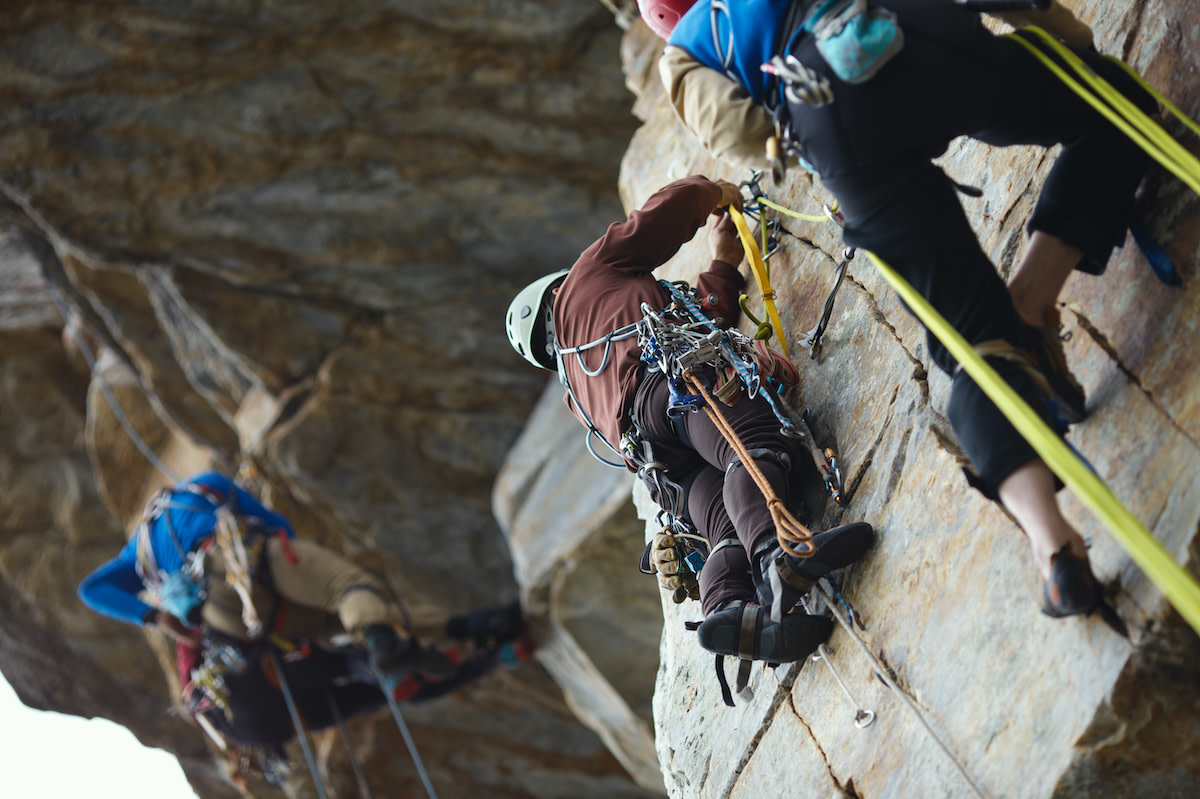How to Build a Quad Anchor System for Rock Climbing
Written by MasterClass
Last updated: Oct 15, 2021 • 3 min read
The quad anchor is a rock climbing system that evenly distributes weight between multiple anchors, allowing climbers to easily move from pitch to pitch. Learn how to build a quad anchor, along with some of its primary uses.
Learn From the Best
What Is a Quad Anchor?
A quad anchor is a rock climbing anchor system that evenly distributes weight between multiple anchor points. There are many advantages to using the quad anchor system: It is self-equalizing, redundant, quick to set up, and the construction of the system creates a built-in stop-gap should one of the anchor points break. Additionally, you can set up the anchor at the beginning of the day, and it will not require retying throughout your climb.
Some climbers use the SERENE-SA mnemonic device—which stands for strong, equalization, redundancy, efficiency, no extension, and small angles—to remember the essential safety qualities in an anchor system. The quad anchor gained popularity in the climbing community because it meets all of these criteria.
3 Quad Anchor Uses
Whether you are into trad climbing or sport climbing, the quad is a solid anchor for a variety of climbs:
- 1. Routes with two-bolt belays: Since the quad anchor system helps equalize weight between two anchor points, climbers in sport climbing or ice climbing can use it when there are two reliable, built-in bolt anchors or ice screws that they can use as a top rope.
- 2. Climbs with change in direction: The quad anchor is self-adjusting, making it a good choice for climbs where the climber has to zig and zag in different directions to rappel or belay.
- 3. Multi-pitch routes: Climbers only need to construct the quad anchor once, and they can easily move it from pitch to pitch, useful qualities for climbs with multiple belay stations.
How to Build a Quad Anchor
Learn how to build a quad anchor system using the following tutorial:
- 1. Gather your equipment. In addition to your regular climbing gear, you will need a 20-foot, 7mm nylon cord and four locking carabiners.
- 2. Make a double fisherman knot. Use a double fisherman’s knot to tie your cordelette (accessory cord) into one loop, then double it so that you have four pieces of equal length. Place the knot that binds the rope toward the end of one side of the loop. Learn how to tie a double fisherman’s knot.
- 3. On each side of the rope, tie an overhand knot. Next, tie an overhand knot—a basic knot that will serve as a stopper—on each side of the cordelette, about four to seven inches from the ends, to create two equalized clip-in points for your carabiners. To make this knot, cross the end of the rope over the top of the remaining rope to make the shape of a letter Q. Pull one end of the rope through the loop and tighten it. Avoid tightening the knot too much because you’ll need to be able to slide or move it. Additionally, tying the knots near the master point—the part that holds the load—will limit the shock load if one of the sides fails.
- 4. Attach the carabiners: Attach a carabiner, or “biner” for short, to the loops at each end of the anchor, the anchor points. Next, clip two carabiners around two or three of the ropes in the middle of the overhand knots; The carabiners’ gates should go in opposite directions. Do not attach the carabiners to all four ropes, as it will undermine the anchor’s safety and redundancy. The fourth strand will keep you safe if one of the two anchor points should fail.
Before You Start Climbing
Climbing is a high-impact activity with an elevated risk of serious injury. Practice, proper guidance, and extensive safety precautions are essential when attempting a climbing pursuit. This article is for educational and informational purposes only and is not a substitute for professional instruction or guidance.
Ready to Give “On the Rocks” a Whole New Meaning?
Take your climbing mastery to new heights with the MasterClass Annual Membership and exclusive video lessons from Alex Honnold and Tommy Caldwell, two of the world’s most accomplished climbers. Together they’ll help you get a grasp on climbing holds, balance, footwork, and more, plus teach you the ins and outs of ethical outdoor exploration.
